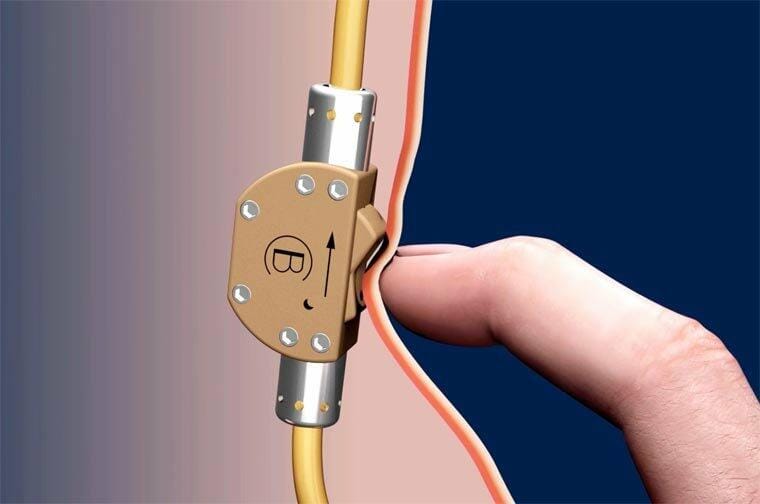Fertility Could Be Controlled with a Switch

A team of German scientists is developing a new device to control fertility. The Bimek SLV is a valve that is fitted to the sperm ducts and interrupts sperm flow from the testicles to the ejaculatory ducts. The valve’s position can be modified any time manipulating a switch through the scrotum. The start-up is looking for investors and for volunteers for the clinical trials, and plans to release the product in 2018.
Clemens Bimek invented the SLV in 1998 and patented it in 2000. A firm believer in his own invention, he had two precursor versions of the SLV implanted on himself with the help of Professor H. W. Bauer. In 2015, Dr. Peter Schnückel invested in Bimek’s startup through his business accelerator PES Innovation AG. Due to Mr. Bimek’s strict veganism, the first and only animal tests will be the clinical trials on humans scheduled for 2016, which hopefully will allow Bimek SLV to obtain medical approval.
The switch controls a valve that diverts the sperm flow
The Bimek SLV is a 7x11x18 mm, 2 grams switch that is attached to the vas deferens, the conduct that carries sperm from the epididymis to the ejaculatory ducts in most vertebrates.These conducts are 30 cm long, 3 to 5 mm in diameter and muscular. During ejaculation, the smooth muscle that forms the vessel’s walls contracts, propelling the sperm forward. When the user turns off the switch, located inside the scrotum, the valves divert the flow of sperm sidewards within the body. The SLV is made of PEEK optima, a safe and durable implant material.
The device is implanted in 30 minutes under local anaesthesia. During the surgery, the sperm ducts are transected, and each end is attached to the valve casing. Unlike vasectomy, the Bimek SLV is reversible: fertility is controlled with a switch. The device also avoids the side-effects of hormone treatments.
Source: Bimek
